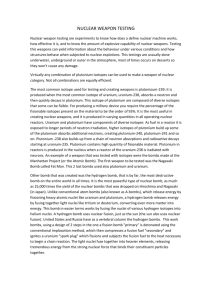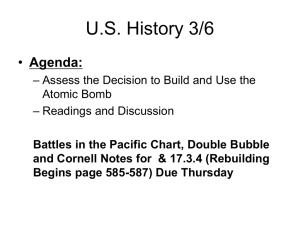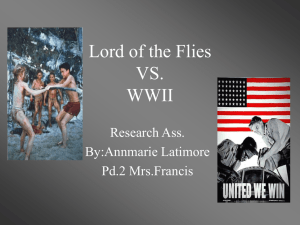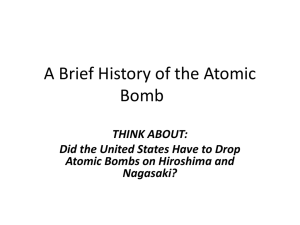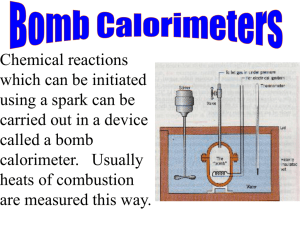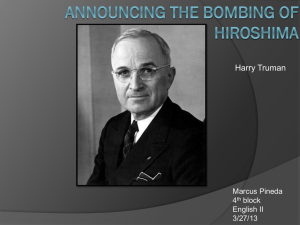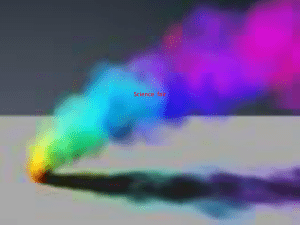The History and Physics of Nuclear Weapons
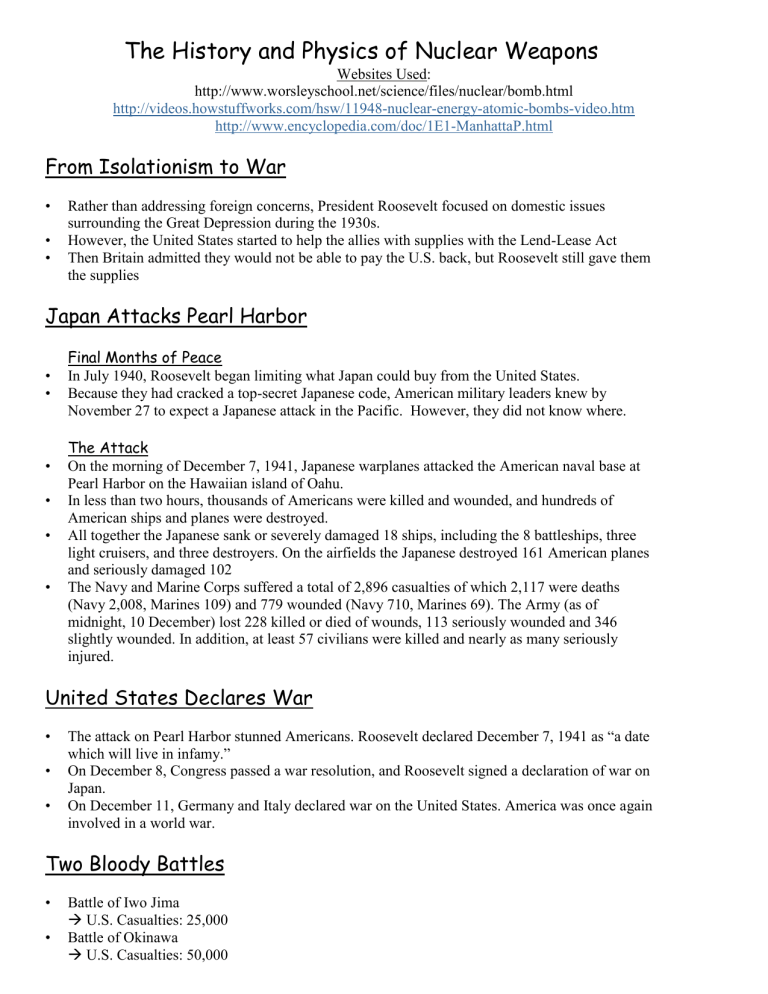
The History and Physics of Nuclear Weapons
Websites Used: http://www.worsleyschool.net/science/files/nuclear/bomb.html http://videos.howstuffworks.com/hsw/11948-nuclear-energy-atomic-bombs-video.htm
http://www.encyclopedia.com/doc/1E1-ManhattaP.html
From Isolationism to War
•
Rather than addressing foreign concerns, President Roosevelt focused on domestic issues surrounding the Great Depression during the 1930s.
•
However, the United States started to help the allies with supplies with the Lend-Lease Act
•
Then Britain admitted they would not be able to pay the U.S. back, but Roosevelt still gave them the supplies
Japan Attacks Pearl Harbor
Final Months of Peace
•
In July 1940, Roosevelt began limiting what Japan could buy from the United States.
•
Because they had cracked a top-secret Japanese code, American military leaders knew by
November 27 to expect a Japanese attack in the Pacific. However, they did not know where.
The Attack
•
On the morning of December 7, 1941, Japanese warplanes attacked the American naval base at
Pearl Harbor on the Hawaiian island of Oahu.
• In less than two hours, thousands of Americans were killed and wounded, and hundreds of
American ships and planes were destroyed.
•
All together the Japanese sank or severely damaged 18 ships, including the 8 battleships, three light cruisers, and three destroyers. On the airfields the Japanese destroyed 161 American planes and seriously damaged 102
•
The Navy and Marine Corps suffered a total of 2,896 casualties of which 2,117 were deaths
(Navy 2,008, Marines 109) and 779 wounded (Navy 710, Marines 69). The Army (as of midnight, 10 December) lost 228 killed or died of wounds, 113 seriously wounded and 346 slightly wounded. In addition, at least 57 civilians were killed and nearly as many seriously injured.
United States Declares War
• The attack on Pearl Harbor stunned Americans. Roosevelt declared December 7, 1941 as “a date which will live in infamy.”
•
On December 8, Congress passed a war resolution, and Roosevelt signed a declaration of war on
Japan.
•
On December 11, Germany and Italy declared war on the United States. America was once again involved in a world war.
Two Bloody Battles
• Battle of Iwo Jima
U.S. Casualties: 25,000
•
Battle of Okinawa
U.S. Casualties: 50,000
What is a nuclear bomb?
There are two main types of bombs which release energy from the nuclei of atoms.
1.
Atomic bomb –
This type of bomb releases great quantities of energy through a process called
nuclear fission, or 'splitting', of a large unstable (radioactive) element like uranium or plutonium (like
a nuclear power plant).
2.
Hydrogen bomb, or thermonuclear bomb –
This type of bomb releases an even greater quantity
of energy through nuclear fusion, a process which combines smaller nuclei into a larger nucleus (like
in the sun and stars).
The bombs dropped on Hiroshima and Nagasaki were both atomic (fission) bombs.
How does it work?
AND
The energy source is a mass of radioactive material (material which releases particles and energy) such as uranium or plutonium. This material is very unstable -the atom's nucleus is ready to fall apart at the slightest nudge, releasing unneeded energy and extra neutrons. In the diagram, the plutonium ( B ) is given that nudge by the outer casing of TNT ( A ), which explodes all around it.
The plutonium is unstable (radioactive), so the atoms are continually breaking up into smaller elements that are more stable. Every time one nucleus splits, it releases extra energy no longer needed to hold it together, as well as a few neutrons.
The force of the TNT explosion causes the plutonium to be squashed, or compressed in size, and become so densely packed together that the neutrons escaping from the decaying nuclei of plutonium cannot escape from the plutonium without bumping into another plutonium atom.
When they hit another atom, they cause that nucleus to break down too, and the second nucleus releases more energy and neutrons, which in turn go and break up more nuclei in a rapidly escalating chain reaction. Within a fraction of a second, all the nuclei in the chunk of plutonium have been hit by escaping neutrons, and have broken down. The extra energy in atomic nuclei is all released at once
Who made it, how, and when?
Manhattan Project
•
August 1939
President Roosevelt received a letter from Albert Einstein
There is a new type of bomb that could be created by the Germans (Atomic)
Roosevelt wanted to build the bomb before the Germans
• July 6, 1945
Tested Bomb in New Mexico
The actual design and building of the plutonium and uranium bombs took place at Los
Alamos, N.Mex., under the leadership of J. Robert Oppenheimer .
Shattered windows 125 miles away
Alternate Decisions
•
Massive invasion of Japan which would cost millions of Allied lives
• A naval blockade to starve Japan, along with continual conventional bombing
•
A demonstration of new weapon on a deserted island to pressure Japan surrender
•
Soften Allied demands for Unconditional Surrender
Decision to Drop the Bomb
•
Roosevelt dies April 1945
•
Truman is now the President and he makes the decision to drop the Atomic Bomb
• Quote to his critics:
“You should do your weeping at Pearl Harbor”
Little Boy
•
First bomb was dropped August 6th, 1945
•
Hiroshima
Site of Large Army Base
About 80,000 killed or injured
90% destroyed
TO THE JAPANESE PEOPLE:
America asks that you take immediate heed of what we say on this leaflet.
“We are in possession of the most destructive explosive ever devised by man. A single one of our newly developed atomic bombs is actually the equivalent in explosive power to what
2000 of our giant B-29s can carry on a single mission. This awful fact is one for you to ponder and we solemnly assure you it is grimly accurate.
We have just begun to use this weapon against your homeland. If you still have any doubt, make inquiry as to what happened to Hiroshima when just one atomic bomb fell on that city.
Before using this bomb to destroy every resource of the military by which they are prolonging this useless war, we ask that you now petition the Emperor to end the war. Our president has outlined for you the thirteen consequences of an honorable surrender. We urge that you accept these consequences and begin the work of building a new, better and peace-loving
Japan.
You should take steps now to cease military resistance. Otherwise, we shall resolutely employ this bomb and all our other superior weapons to promptly and forcefully end the war.
EVACUATE YOUR CITIES.”
Fat Man
August 9th, Second Bomb dropped on Nagasaki
After effects of bomb drop?
Radiation poisoning is a form of damage to organ tissue due to excessive exposure to ionizing radiation by a large dosage of radiation in a short period, or through long term exposure.
Thermal burns from infrared heat radiation.
Beta burns from shallow penetrating radiation upon the skin would be able to cause a localized burn.
Beta particles can slightly penetrate living matter and can do enough damage to cause cancer and death.
Gamma burns from deeply penetrating radiation would likely cause uniform whole body irradiation rather than only a surface burn. Whole body gamma irradiation can cause nausea, hair loss, hemorrhaging and will cause death without medical treatment.
Surrenders
Japan surrenders August 14th, 1945


